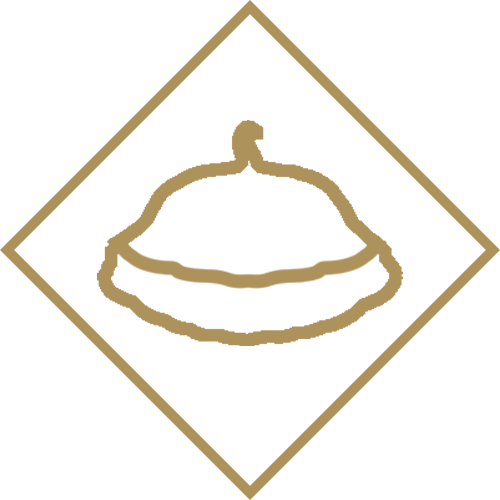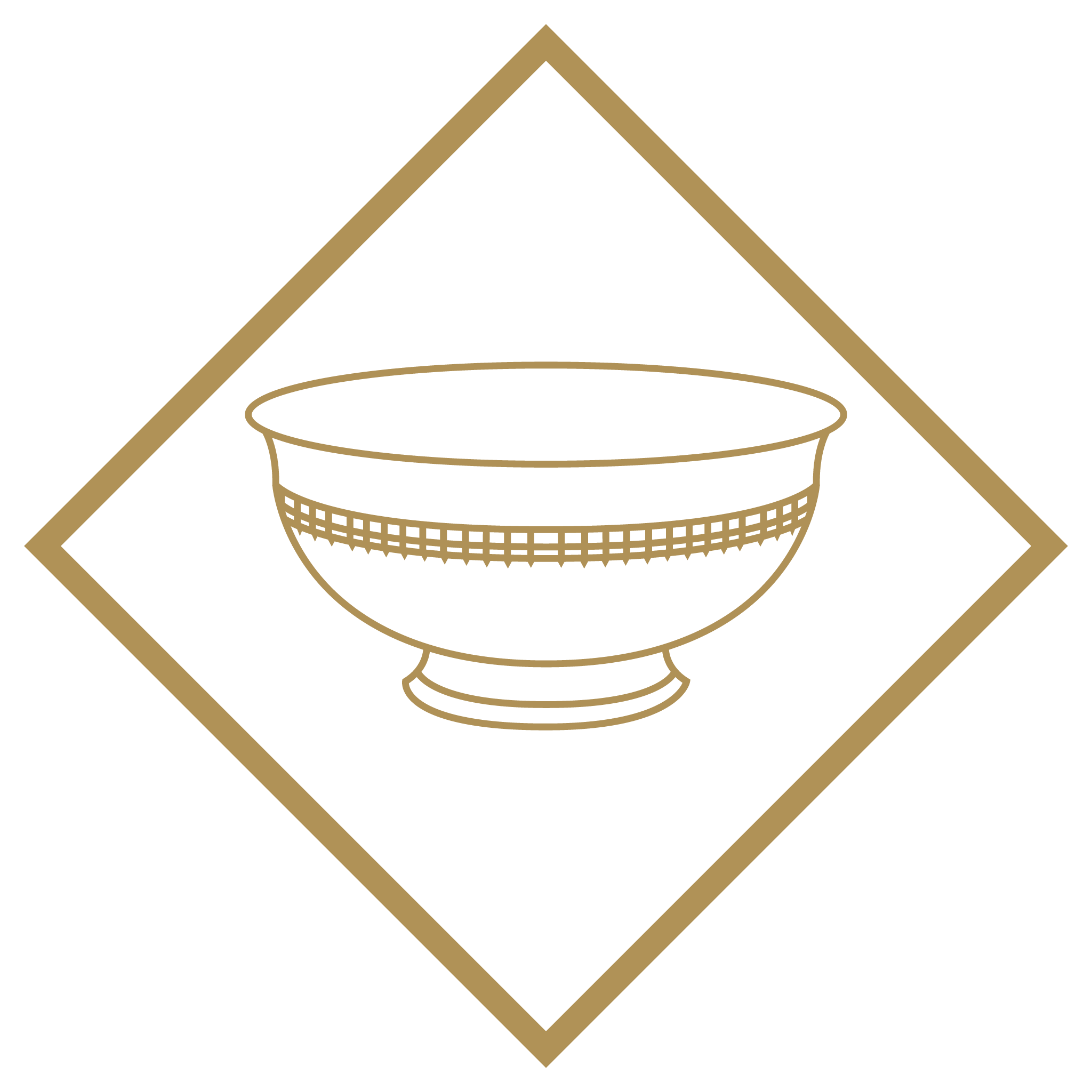How To Read A Hallmark
Reading Silver Hallmarks: A Guide
Reading silver hallmarks can tell you a lot about your silver item, including the purity, where it was assayed, in whose factory it was produced, and the year in which the item was assayed.
This helpful guide will help you get started with reading your hallmarks. Then if you want a more in depth guide to the marks on your specific piece then we suggest this handy pocket guide: Jackson’s Hallmarks, Pocket edition: English Scottish Irish Silver & Gold Marks From 1300 to the Present Day (affiliate link).
Step 1: Locate The Hallmarks
The first step in reading silver hallmarks is to locate the marks on your item. The location of the marks varies from item to item, but there are some general rules. For example, the hallmarks on silver flatware are usually located on the back of the piece, on a flat edge.
If the hallmark is unclear then you can breathe on it – like you would to produce condensation on a window, and the mark should become a little clearer.

Step 2: The Standard Mark
The standard mark identifies your item as being silver. The mark that indicates sterling silver is called the lion passant. Two variations of this mark have been used throughout history. The first was known as the lion passant guardant, with the lion’s head facing towards the viewer. The modern lion passant, with the lion’s head facing to the left, was introduced in 1822.
You may find that your item does not bear the lion passant, but rather the figure of Britannia, indicating that the item is of 95.83% purity.


Step 3: The Town Mark
Now that you know that your item is silver and the purity of your item, it is time to find out where the item was assayed.
Each assay office (where items are tested for purity and stamped as sterling if they meet the requirements) has its own distinct mark, known as the town mark. The town mark in this example is the leopard’s head mark for London.
You can look up the most common town marks here.


Step 4: The Date Letter
A common misconception is that the date letter tells us in which year the silver item was made. In fact, it tells us when the item was assayed. Date letters were also used to identify the Touch Warden responsible for the assaying.
Reading date letters requires a pocket hallmark guide, which you can purchase here. Alternatively, online guides are available to help you.
Different assay offices use different date letters, so it is important that you identify the town mark before the date letter.
In addition to this, the shapes of the shields and the style of the script varies from office to office and year to year, so these marks must be observed very carefully.


Step 5: The Maker’s Mark
The maker’s mark tells us in whose factory the item was made, as opposed to the specific person that made the item.
Since 1739 the standard composition of a maker’s mark has been the initials of the maker. Prior to this, the first two letters of the maker’s last name and sometimes objects or devices were used as maker’s marks.
This website is a great tool for cross-referencing maker’s marks. Once you have ascertained the year of hallmarking, it is much easier to find the maker’s mark, as you have some idea of the period in which the maker was operating.
Again, make sure you are looking closely. Something as small as a slightly slanted letter can mean the difference between one mark and another.


Learn More About Your Silver Item
HALLMARK FAQs
What Are Silver Hallmarks?
Silver hallmarks are used to identify the origins and purity of an item of silver. Silver hallmarks comprise four main elements to tell you this: the town mark, the date letter, the maker’s mark, and the lion passant. During the period between 1784-1890 a duty was placed on gold and silver, leading to the introduction of the duty mark.
What Do Silver Hallmarks Mean?
The combination of marks on your silver items mean different things. The lion passant on an item of silver guarantees that the silver is at least 92.5% pure, which is the sterling standard. From 1697 to 1720 the standard was increased to 95.83% pure, also known as Britannia silver. A new mark, the figure of Britannia, was introduced to account for this. The rest of the marks tell you who made it and when.
When Did Silver Hallmarks Start?
The first record of hallmarks used to regulate purity dates back to 1300, when Edward I decreed that the leopard’s head mark would guarantee sterling silver. Silver hallmarks have changed and evolved many times over the centuries, making some hallmarks difficult to place.
When Are Silver Marks Not Hallmarks?
Some items of silver plate carry marks that look very similar to hallmarks but which do not indicate that the items are silver, marks such as A1 and EP are used on silver plated items. Some silver items made outside the UK have different marks due to different ways of registering silver.
A History of British Hallmarks
Henry II is credited with the creation of the Goldsmiths Guild in London, allowing them to use the leopard’s head hallmark in 1180.
Henry III made the earliest attempt at regulating the standard and gold and silver in 1238. He passed an order that commended the mayor and the aldermen (a co-opted member of an English county or borough council, next in status to the Mayor) of the City of London to choose six London-based goldsmiths to superintend the craft. This is when the idea of assaying for purity was introduced.
However, it was not until Edward I that an actual standard for purity was introduced. In 1300 Edward I decreed that the leopard’s head mark would guarantee sterling silver (92.5% silver). Gold had to be at least 19.2 carats. This was enforced by ‘Guardians of the Craft’ who would go from shop to shop in London and assay the pieces produced there, applying the leopard’s head in the pieces met the minimum purity standard. Goldsmiths outside the capital were also expected to adhere to this standard.
The maker’s mark was introduced in 1363 under Edward III and was required alongside the leopard’s head in order to identify the maker.
In 1423 Edward VI introduced the Quality and Marks of Silver Work Act, requiring every assay office to have its own mark.
1478 was an important year for hallmarking. The gold standard was lowered to 18ct. The Goldsmith’s Company was made responsible for wares found to be below standard and for the penalties that had to be dealt. This led to an overhaul in the system used for assaying, and the establishment of the first assay office which was overseen by a Common Assayer. The need to differentiate between old and new plate following the change in standard led to the introduction of the crowned leopard’s head mark. A date letter was also introduced. This not only identified the year in which the item was assayed but also identified the Touch Warden responsible. It is thought that the term ‘hallmark’ comes from the use of the Goldsmith’s Hall as the first assay office.

The Lion Passant Appears
In 1544 the lion passant guardant (head facing towards the viewer) was introduced. No official records explaining its introduction survive. However, it is theorised that it has something to do with Henry VIII’s interference in hallmarking as he sent two of his men into the assay office in this year. The King had been debasing the value of coinage since 1542. He had some kind of issue with the Goldsmith’s Company which was ordered to surrender its charter. However, the King passed away in 1547 before this order could be carried out. The lion passant guardant indicated sterling silver purity for all assay offices.
The gold standard was raised to 22ct in 1576.
An Act of Parliament in 1697 changed the silver purity standard from 92.5% to 95.83%. This is known as Britannia silver. Hallmarks in this period comprised the maker’s mark, the figure of Britannia, the lion’s head erased, and the date letter. Throughout this period, gold was stamped with sterling marks through an anomaly.
By 1720 the sterling standard was restored but Britannia silver remained as an alternative. A tax on silver plate was also introduced during this time, meaning that many goldsmiths went to great lengths to avoid having their pieces properly hallmarked. A duty mark was introduced in 1784 to show that the appropriate duty had been paid for the purity. This mark depicted the king or queen’s head. This was used until 1890.
Standardising Maker’s Marks
In 1739 there was a crackdown on the composition of maker’s marks. At various points in history different styles had been used. Prior to 1697, the maker’s mark had consisted of initials or devices. This was changed and maker’s now had to use the first two letters of their last name. The reintroduction of the sterling silver mark led to some confusion over the correct composition of the maker’s marks. All goldsmiths had to destroy their old marks and register new ones at the hall, using their initials and a new style of lettering. It was hoped that this would help to detect counterfeit marks. In 1757, counterfeiting hallmarks became a felony, punishable by death.
By 1773, the large-scale manufacturing and the increased use of machines for silver production in Birmingham and Sheffield led to calls for assay offices in these cities. This was opposed by the Goldsmith’s Company, but the proposal went ahead thanks to a special inquiry by the House of Commons.


In 1786, the sovereign’s head mark changed from facing left to facing right.
1822 saw changes to existing hallmarks: the leopard’s head lost its crown, and the lion passant was no longer guardant, instead facing to the left.
In 1844, 22ct gold was finally recognised with marks featuring a crown and the number ‘22’.
In 1854, 9, 12, and 15ct gold was introduced, indicated by marks denoting their actual fineness, e.g. 375. In 1855, gold wedding rings were made liable for hallmarking for the first time.
1867 saw the introduction of a mark on imported gold and silver items, an ‘F’ in an oval escutcheon. Marks used to indicate foreign plate changed frequently, making them particularly difficult to recognise.
In 1890, the tax on silver and gold was withdrawn, and with it the use of the sovereign’s head mark.
12 and 15ct gold standards were cancelled in 1932 and replaced by 14ct gold.
During the Second World War the utility mark was introduced, indicating that the fineness of gold wedding rings had been reduced to 9ct and a weight of less than 2dwts. The utility mark also indicated that they had been produced with government authority.
Creating a streamlined system of legislation spanning many hundreds of years was quite a challenge, but in 1973 Royal Assent was given to a measure that repealed all existing hallmark statutes and consolidated them into a single Act: The Hallmarking Act of 1973. This act came into effect in 1975. This act also introduced hallmarks for platinum, featuring an orb and a cross.
What Affects The Value Of Your Antique Silver?
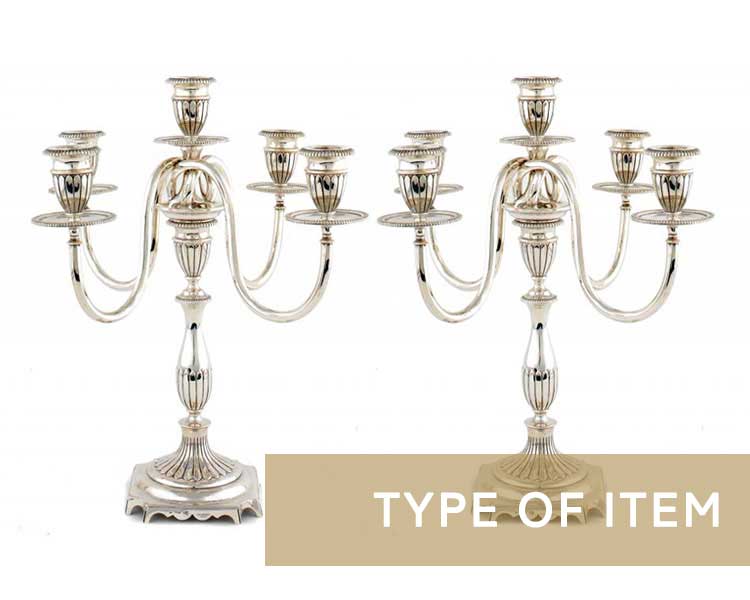
Type Of Item
One of the main factors that affects the value of your antique silver is the type of object itself. By its nature most silver is utilitarian, meaning that the form of the items has a distinct purpose. Tea services, coffee pots, cutlery, candlesticks etc are all examples of items that were made for a specific purpose. While still commercial, these types of items are seldom collected in large numbers.
Smaller, collectable items such as vesta cases and card cases can be worth much more than larger items such as tea services simply because they can be collected in larger numbers with ease.
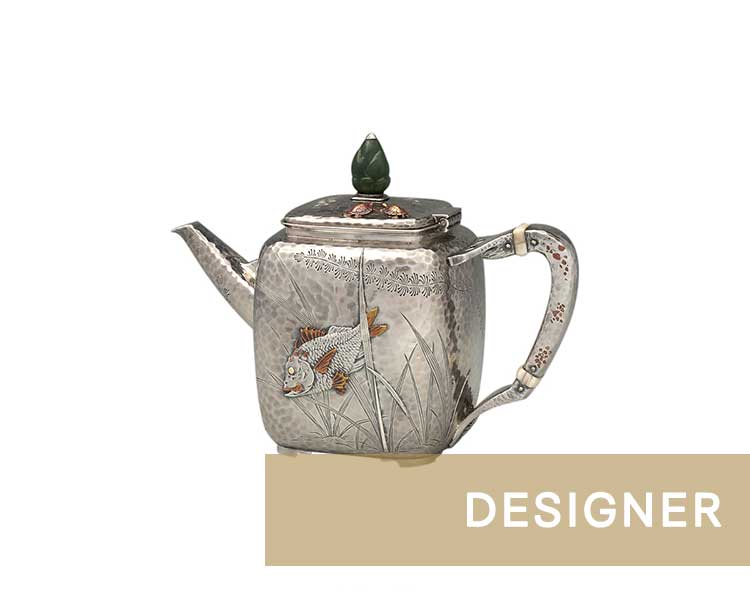
Designer
As with works of art, all pieces of silver are signed. Perhaps not by the craftsman that made them, but they all carry a maker’s mark as part of the hallmark. The maker’s mark will let you know which workshop produced the item.
Items by well know and sought after silversmiths and designers such as Paul Storr, Omar Ramsden, A.E. Jones, Charles Robert Ashbee etc will always command a premium.
You can use this website to find out the maker of your silver.
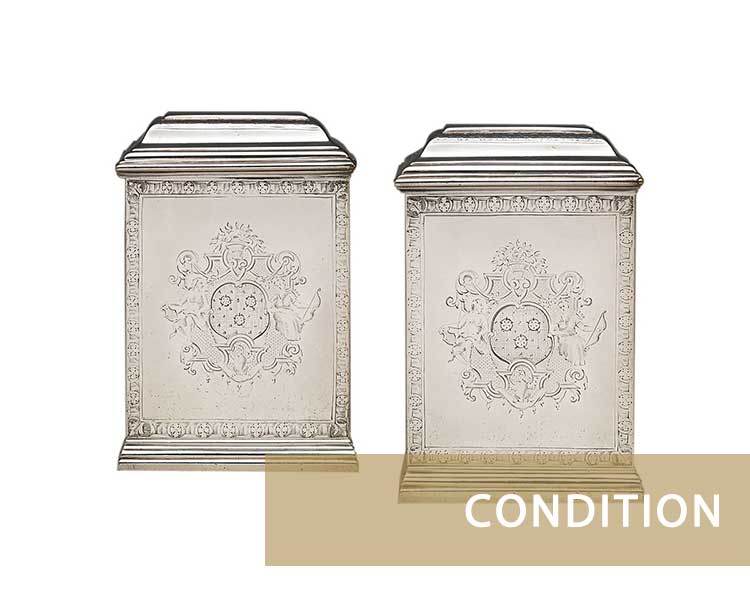
Condition
Clearly the condition of your antique silver will have an impact on the value.
Dents, bruises and splits are all obvious forms of damage that will impact the value.
Quite often on antique silver you may find that a coat of arms has been removed which can be hard to spot but will also have a big impact on the value. Likewise, a canteen of silver may have had its owners initials engraved onto each piece. This can also have a negative impact on the value in some instances.
What Our Customers Say
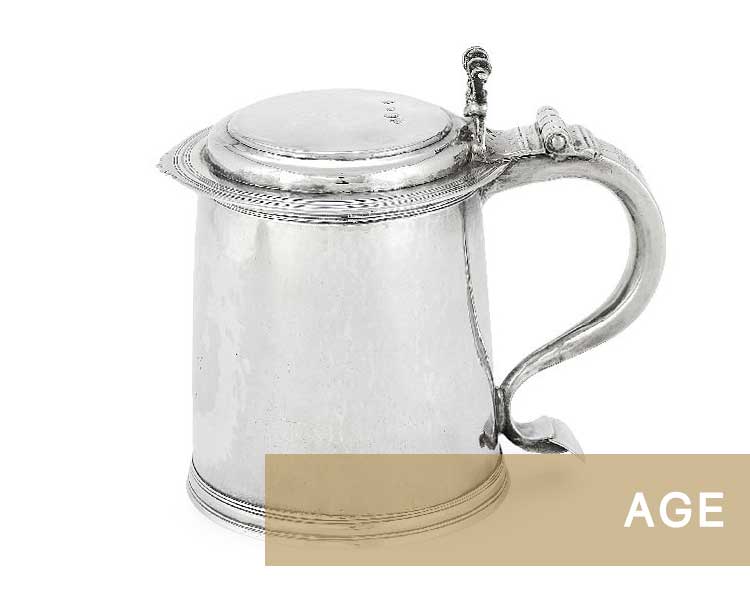
Age
We have been applying hallmarks to silver since the 14th century and as such they are the oldest form of consumer protection in the world.
As silver has always been a good ‘store’ of wealth, there are many moments in history where large volumes of antique silver has been melted to fund wars. As such very little silver remains from the pre-Restoration era (1660). Most antique silver dates from the 18th and 19th century as this is when silver began to be made in much higher volumes.
In many cases, the older the item, the higher the value.
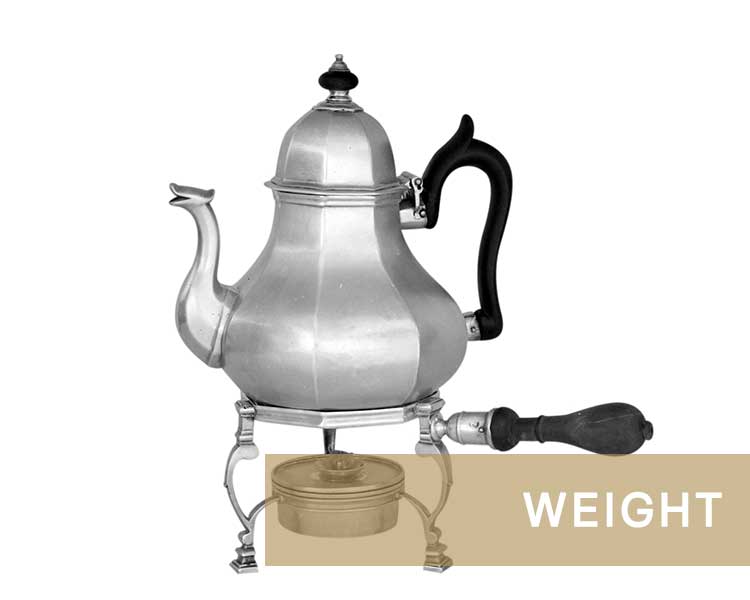
Weight
The weight of your item will help us to understand the quality of your silver. But how?
Silversmiths like Paul Storr produced many items to the same design, but depending on the wealth of their client they would adjust the amount of silver that they would use for the commission.
As such a tea pot may be 500g or it might be 1,300g. Without being able to handle your items in person, providing the weight will give us a very good idea of the gauge of the silver used and thus we will be able to give you a very good idea of the value. As ever, the more information you can provide the better.
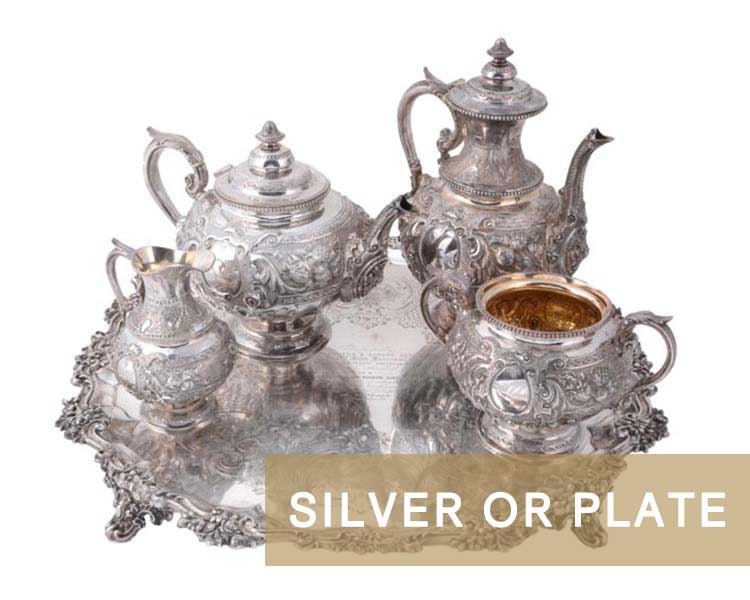
Silver or Plate
To put it bluntly, sterling silver items were made for the middle and upper classes. Silver plate was an invention aimed at making ‘silver’ style items available to the masses.
If you see the letters EPNS or A1 on your item then it is silver plated. Your item will need to be hallmarked and carry very specific marks in order to be legally called silver.
As silver plate was made for the mass market many items of silver plate do not have any value.
As such you might be best hanging onto your silver plate for a while longer.






